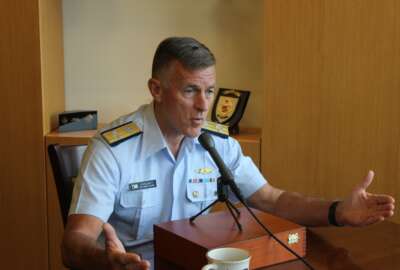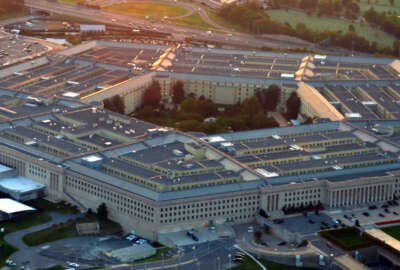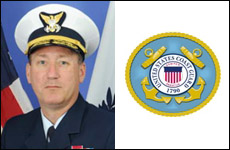
Coast Guard using Windows 10 to spark IT transformation
Brian Burns, the Coast Guard’s acting chief information officer, said the service is on schedule to move to Windows 10 by March 2018.
The Coast Guard sees its technology future in the cloud. But to get there, the fifth military service will have to meet both the Homeland Security Department and the Defense Department’s requirements.
Brian Burns, the Coast Guard’s acting chief information officer and acting deputy assistant commandant for C4IT, said the move to the cloud depends a lot on the sensitivity of the data.
Burns said that’s where the DoD Level 4 or Level 5 cloud cyber standards would come into play.
“In January of this year, the secretary of homeland security and secretary of defense signed an agreement and with that, from a military standpoint, we are using the DoD information network, known as DoDIN,” Burns said on Ask the CIO. “So we have an agreement we will be on that network and comply with the standards on that side.”
The Coast Guard will follow DoD down the path of the Joint Information Environment framework, an ambitious, five-year-old project to unify an estimated 15,000 IT networks and improve their security posture.
At the same time, DHS is looking at cloud and email opportunities as part of their data center consolidation effort.
“We’ve actually consolidated our data centers for the Surface Force Logistics Center and the Aviation Logistics Center into our main operations systems center. That has helped us to improve the performance of some of the systems and to standardize on the operations and maintenance on some of the systems,” he said. “As we go further from that, we also are teaming with DHS to provide a department-level financial management services capability. That leads us into the next steps of going to the cloud.”
Burns said the Coast Guard is starting with disaster recovery in the cloud and then putting certain applications and infrastructure in a public or private instantiation.
RADM Kevin Lunday, the commander of the Coast Guard’s Cyber Command and assistant commandant for command, control, communications, computers and information technology (C4IT), said movement to the cloud is both essential and inevitable, so how they manage it and the security applied to the data and systems will be the key focus area.

“That gets to our relationship with the cloud service provider and ensuring that arrangement and agreement meets all of our requirements on the service side,” he said.
The move to Microsoft Windows 10 also will improve Coast Guard cybersecurity.
Burns said the service is on schedule to meet the deadline of March 2018 DoD established last year.
“It gives us that secure baseline and allows us to take all of the outdated IT and operating systems that are out there and move them to that common baseline that is more capable and more secure,” Lunday said. “It’s essential to giving us the terrain, our own networks that are part of the overall DoD information networks, that we can both operate and defend, and maneuver inside them against adversary threats.”
The Coast Guard is about to go into the initial operating concept for Windows 10 secure host baseline in the coming months.
“The next phase after that will be the virtual desktop interface (VDI). That will allow us to provide more robust security in terms of having virtualization and also the capability of having remote access,” he said. “The next level beyond that is with the Internet of Things, wearable devices and more mobile devices. We are taking in pieces as we go, making sure we have the priorities set in terms of what is most mission essential for operational capabilities, starting with maritime radio as a mobile strategy.”
Burns added the Coast Guard is piloting VDI for remote connections in parallel with Windows 10 implementation. He said their goal is to eventually virtualize their desktop.
“Windows 10, virtual desktop interface and moving forward, looking at cloud is all part of a strategic change at how the Coast Guard looks at, how it acquires and operates and sustains all of its IT systems and networks, and even its telecommunications,” Lunday said. “One of the key areas of transformation is taking a 1990s-era collection of computer networks, systems and infrastructure that we have bolted and built things on to. It was originally designed for administrative purposes. Now, we rely on it for almost every part of operations and missions support across the Coast Guard. We are modernizing not only our approach, but actually all of that technology into a strategic asset, a capital asset like a fleet of cutters, boats or aircraft, what we call an enterprise mission platform. So we think of Windows 10 in this current ongoing effort as really the discrete first phase of that modernization. Virtual desktop interface will be another follow-on phase, and then the movement to the JIE will be another phase.”
Burns added Windows 10 is an opportunity for IT modernization like the Y2K transition was 18 years ago.
“This is an opportunity to look at the applications, to look at where we are and to look at where we can go in the future and enhance our capabilities from an operational standpoint and streamline some of those capabilities,” he said. “We will look at that and then we will go to VDI. If we can look at the applications and understand the environment better from that perspective, that will lead us further down the road to VDI, versus going to VDI in the same environment.”
Lunday said all of these efforts will result in better configuration control and asset visibility, as well as standardized service delivery across all of the Coast Guard’s technologies.
Copyright © 2025 Federal News Network. All rights reserved. This website is not intended for users located within the European Economic Area.
Jason Miller is executive editor of Federal News Network and directs news coverage on the people, policy and programs of the federal government.
Follow @jmillerWFED







